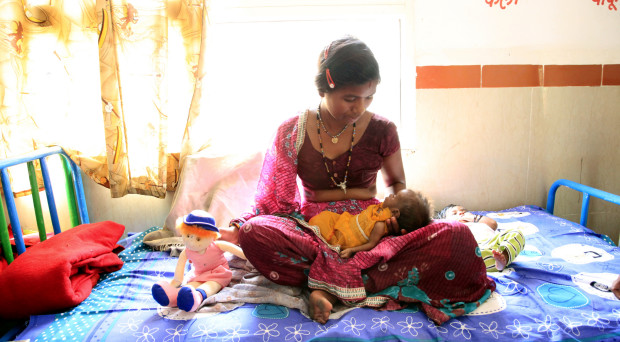
The importance of breastfeeding
The World Health Organization (WHO) recommends exclusive breastfeeding for the first six months of a baby’s life, followed by additional semi-solid foods to complement breast milk. Breastfeeding should preferably be continued up to at least two years in order to protect the child from various forms of malnutrition.
Likewise, early initiation of breastfeeding is very much essential for survival, growth and nutrition of the newborn. In addition, it is also well known for good brain development and learning ability, and protecting the child from diabetes.
However in low- and middle-income countries like India, awareness and adoption of modern family planning methods like breastfeeding are very low.
With all the above mentioned benefits, breastfeeding has never been a central agenda in the long history of health reform in India. With several schemes and plans of action to curb maternal and infant deaths, much of the action has focused only on antenatal check-ups, conducting quality institutional deliveries and sound neonatal care.
Resulting outcomes are obvious. Figures related to malnutrition in India are shocking relative to our overall economic development and progress in recent years. According to the World Bank, rates of malnutrition among India’s children are nearly five times more than in China and twice those in Sub-Saharan Africa.
Barriers in India
Although traditionally India remains a country which supports breastfeeding, psychosocial and cultural barriers still exist for early breastfeeding practices. Indicators for breastfeeding practices and three big indicators of childhood nutrition (which majorly rely on breastfeeding) are one of the worst in the World.
Nearly half (60 million) of the children in India are underweight (weight for their age), 45% are stunted (too short in height for their age) and 20% are wasted (too thin for their height). Similarly breastfeeding indicators are not encouraging at all.
Only one in four mothers are able to start breastfeeding within one hour of giving birth and less than half of all mothers are able to exclusively breastfeed their babies for the first six months after birth.
Since 1990, when economic reforms had taken place in India, lots of women have joined formal workforces, initially in the public sector and now increasingly in the booming private sector enterprises.
Working and breastfeeding
The Maternity Benefit Act of 1961 allows paid maternity leave of only four weeks prior and six weeks after delivery (now revised to 12 weeks). While the enforcement of this act is still patchy in the public sector, working women in the private sector obtain variable maternity benefits as per variable rules governed by their respective companies.
Even though the Act mentions two mandatory nursing breaks of limited time during the course of work (after the mother comes back to work from maternity leave) this has still been poorly implemented.
World Breastfeeding Week (WBW) is celebrated every year from 1st to 7th August across 176 countries coordinated by the World Alliance for Breastfeeding Action (WABA). This year (2015) the theme for the WBW was working women and breastfeeding with the aim of a mother-friendly workplace initiative.
WABA calls for a global action to support women to combine breastfeeding and work. By following some simple benchmarks on nursing care at work places like those outlined in the Guidelines on Breastfeeding by Unicef, lots of childhood morbidity and mortality can be averted.
Stricter implementation of maternity protection acts and regulation in both public and private sector workplaces is the need of the hour. Let us not only celebrate the occasion (WBW) but also consider good breastfeeding practices as part of our larger sustainable development goals.
Find out how much you know about breastfeeding in our quiz, and let us know what you think about these five important points here.
Comments